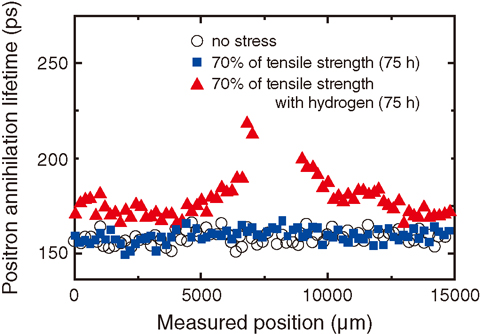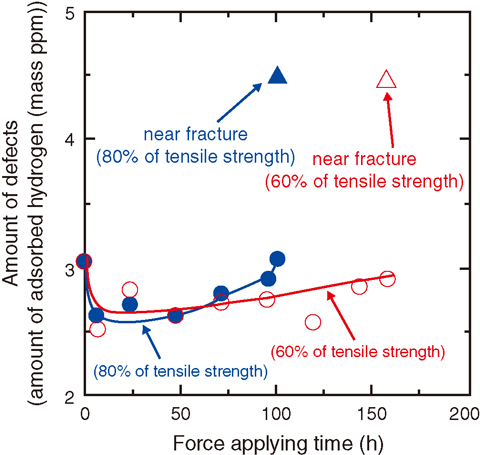
Fig.4-9 Specimens for positron annihilation lifetime measurements

Fig.4-10 Results obtained by positron annihilation lifetime

Fig.4-11 Results obtained by hydrogen adsorption
High-strength steel (tempered martensitic steel), which is also used as steel plates for automobiles, is not usually destroyed by weak forces as it is without deformation. However, it will fracture in about 100 h when a large amount of hydrogen is present. This brittleness caused by hydrogen is called hydrogen embrittlement, but the elucidation of the mechanism has not progressed. One reason for this is that there have been no reliable experiments concerning the behavior of hydrogen. The arrangement of atoms in the steel (crystalline structure) changes along the process to destruction. For example, creases on the plane of the lined up atoms (dislocations) or holes of missing atoms (vacancies) can form. These are generally called defects. Here, there are two methods used for the measurement of defects: one is to measure the time until positron annihilation with one of the electrons in the steel occurs which is called positron annihilation lifetime spectroscopy, and the other is a measurement of the quantity of hydrogen adsorbed in the steel which is called thermal desorption spectroscopy. The studies using these techniques were conducted by the National Institute of Advanced Industrial Science and Technology (AIST) and Sophia University.
The positron efficiently finds a defect and the time until annihilation (lifetime) of the positron is longer in a larger vacant space. As a result, the lifetime is longer in a vacancy than in a dislocation, and longer still in a large hole, i.e., gathered vacancies (vacancy cluster). The steel specimens (Fig.4-9) loaded with 70% tensile strength for 75 h with and without hydrogen were evaluated by the positron annihilation lifetime. As shown in Fig.4-10, the positron annihilation lifetime was longer only with hydrogen, probably because of vacancy formation. In addition, the positron annihilation lifetime is longer still in the vicinity of the broken part because larger vacancy clusters might be formed there.
On the other hand, although hydrogen will easily go out of defect-free steel samples, if defects exist, they attract hydrogen that will not come out easily. Hydrogen adsorbed in dislocations and vacancies comes out at higher temperatures, and the amount of desorbed hydrogen shows the amount of defects in the steel. As shown in Fig.4-11, reduction of defects due to the disappearance of originally existing dislocations is observed at the early stage, and then, the number of defects monotonically increases until fracture.
This study indicates that fracture phenomenon due to hydrogen embrittlement is dominated by the formation of defects such as vacancies. For this study, a “Sawamura Award” was awarded by the Iron and Steel Institute of Japan, and the “Six major results of 2013 from Nanotechnology Platform Japan and Best research support award 2014” was awarded by the Ministry of Education, Culture, Sports, Science and Technology of Japan (MEXT).